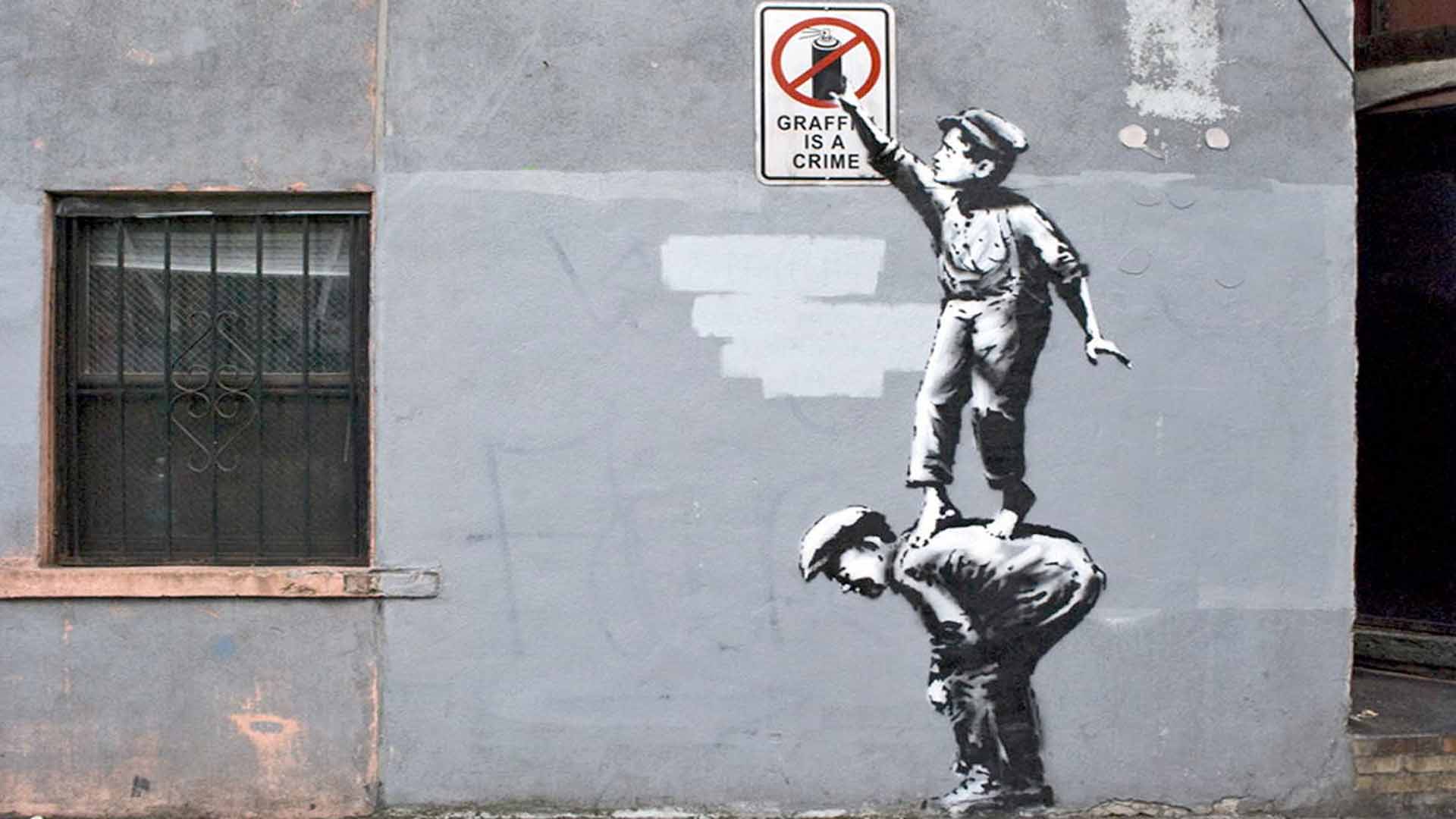
The work “The Street is in Play” was part of his month-long project “Better Out Than In” in New York. Banksy unveiled at least one piece of art a day and posted it on a dedicated website and his Instagram account. Although Banksy’s works were inherently illegal, no official complaints were filed with the police; most property owners praised the art and some took action to protect it. The Street is in Play shows two boys reaching for the spray can in the prohibition sign. One might assume that the image alludes to the fact that street art is driven by youth and rebellion, but here the artist deliberately leaves room for interpretation. After only one day, the work was painted over.
Das Werk „The Street is in Play“ war Teil seines einmonatigen Projekts „Better Out Than In“ in New York. Banksy enthüllte täglich mindestens ein Kunstwerk und veröffentlichte es auf einer speziellen Website und seinem Instagram-Account. Obwohl Banksys Werke von Natur aus illegal waren, wurden keine offiziellen Beschwerden bei der Polizei eingereicht; die meisten Grundstückseigentümer lobten die Kunst und einige ergriffen Maßnahmen, um sie zu schützen. The Street is in Play zeigt zwei Jungen, die nach der Sprühdose im Verbotsschild greifen. Man könnte annehmen, dass das Bild auf die Tatsache anspielt, dass Straßenkunst von Jugend und Rebellion angetrieben wird, aber hier lässt der Künstler bewusst Raum für Interpretationen. Nach nur einem Tag wurde das Werk übermalt.
Praca The Street is in Play była częścią jego miesięcznego projektu „Better Out Than In” w Nowym Jorku. Banksy odsłaniał co najmniej jedno dzieło sztuki dziennie i publikował je na dedykowanej stronie internetowej oraz na swoim koncie na Instagramie. Chociaż prace Banksy’ego były z natury nielegalne, nie złożono żadnych oficjalnych skarg na policję. Większość właścicieli nieruchomości pochwalała sztukę, a niektórzy podjęli działania w celu jej ochrony. The Street is in Play pokazuje dwóch chłopców sięgających po puszkę ze sprayem na znaku zakazu. Można przypuszczać, że obraz ten nawiązuje do faktu, że sztuka uliczna jest napędzana przez młodość i bunt, ale tutaj artysta celowo pozostawia miejsce na interpretację. Pracę zamalowano po zaledwie jednym dniu.
